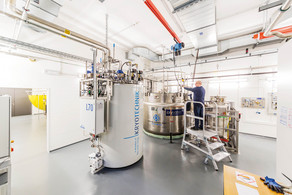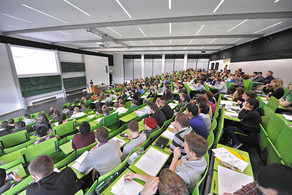Thesis defense of Philip Bleicker
- Defense
Despite about six decades of research on the Fermi-Hubbard model (FHM), there is hardly any other model that holds a comparable fascination. The model has a conceptually simple structure and yet contains the essential ingredient of a solid: interaction. Precisely this interaction, however, opposes conclusive solutions of the FHM in equilibrium and non-equilibrium and imposes high demands on methodological approaches.
In the course of this work, we review the FHM and related models which can be derived from it, e.g. the t-J model or the Heisenberg model, discuss key topics of current research and use both well-known methods like CET and TPQS and new techniques like iEoM to contribute to the elucidation of some central questions. We begin with the analyses of equilibration and thermalisation in quenched closed quantum systems and confirm as well as extend previously made hypotheses. Furthermore, we challenge and falsify the assumption of a dynamical phase transition in one dimension. In a second step, we reduce the FHM to an effective t-J model, which is of particular interest in the context of high-temperature superconductivity, and consider the resulting charge carrier dynamics. Moreover, we confirm ideas on the quantitative predictability of the autocorrelation in dense spin systems. In the last step, we propose a novel theoretical approach based on iEoM for the systematic evaluation of Green's functions in reduced operator subspaces and motivate its applicability by means of an exemplary calculation.








